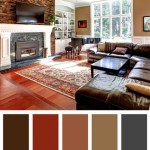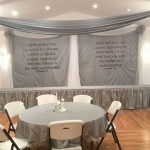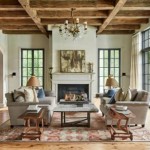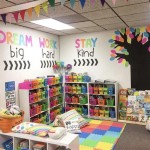Baby Letters for Room Decor: A Comprehensive Guide
Baby letters, used as room decor, offer a personalized and aesthetically pleasing way to enhance a nursery or child's bedroom. These letters, often crafted from various materials such as wood, foam, or metal, can spell out a child's name, initials, or a meaningful word, adding a unique touch to the space. The selection and placement of baby letters require careful consideration of factors like material, size, color, and overall design to create a cohesive and visually appealing environment.
The purpose of this article is to explore the diverse options for baby letters used in room decor, examining the various materials, styles, and placement strategies available. It will also delve into considerations for safety and longevity, ensuring the chosen letters contribute positively to the child's environment without posing any risks. The aim is to provide a comprehensive guide for parents and decorators looking to incorporate baby letters into a room design, outlining the best practices for achieving a stylish and personalized space.
Material Considerations for Baby Letters
The material used to create baby letters significantly impacts their appearance, durability, and safety. Common materials include wood, foam, metal, and plastic, each with its own advantages and disadvantages. The choice of material should align with the overall aesthetic of the room and the desired level of durability and safety.
Wood is a popular choice due to its natural appearance and versatility. Wooden letters can be painted, stained, or left unfinished, allowing for customization to match any color scheme. Hardwoods like maple or oak offer greater durability, while softer woods like pine are more affordable but may be more susceptible to dents and scratches. When selecting wooden letters, it is crucial to ensure they are finished with non-toxic paints or stains, especially as young children may be tempted to put them in their mouths or touch them frequently.
Foam letters are a lightweight and soft option, making them suitable for younger children's rooms. They often come in bright colors and playful designs, adding a fun and whimsical touch to the decor. Foam letters are generally safe as they are unlikely to cause injury if they fall. However, they may not be as durable as wooden or metal letters and can be easily damaged or torn. Look for foam letters made from non-toxic materials, such as EVA foam, and ensure they are large enough to prevent a choking hazard.
Metal letters offer a more modern and sophisticated look. They are typically more durable than wood or foam and can withstand wear and tear. Metal letters can be made from various metals like aluminum, steel, or iron, each with different finishes and textures. When choosing metal letters, it is essential to ensure they have rounded edges and are securely mounted to prevent them from falling and causing injury. Metal letters may be heavier than other options, requiring more robust mounting hardware and careful placement.
Plastic letters are an affordable and versatile option, available in a wide range of colors and styles. Plastic letters are often lightweight and easy to clean, making them practical for a child's room. However, the quality of plastic can vary, and some cheaper plastics may be brittle or prone to cracking. When selecting plastic letters, it is crucial to ensure they are made from non-toxic, BPA-free plastic and are free from sharp edges or small parts that could pose a choking hazard.
Style and Design Elements of Baby Letters
Beyond the material, the style and design of baby letters play a crucial role in their overall aesthetic impact. Factors such as font, color, size, and embellishments contribute to the letters' visual appeal and their integration into the room's design scheme. Careful consideration of these elements can create a cohesive and personalized look that enhances the overall ambiance of the space.
Font selection is a key aspect of designing baby letters. Different fonts evoke different moods and styles, ranging from playful and whimsical to elegant and sophisticated. Sans-serif fonts, like Arial or Helvetica, are often chosen for their clean and modern look, while serif fonts, like Times New Roman or Garamond, offer a more traditional and formal feel. Script fonts can add a touch of elegance and personality, but they may be harder for young children to read. It is important to choose a font that is legible and visually appealing, considering the child's age and developmental stage.
Color is another essential design element that can significantly impact the look and feel of baby letters. Colors can be chosen to complement the existing color scheme of the room or to create a contrasting accent. Soft pastel colors are often used in nurseries to create a calming and peaceful atmosphere, while bright and bold colors can add a playful and energetic touch. Consider using a color palette that coordinates with other decorative elements in the room, such as bedding, curtains, and wall art. Color psychology should also be taken into account, as certain colors can evoke specific emotions and moods.
The size of baby letters should be proportionate to the size of the room and the wall space where they will be displayed. Large letters can make a bold statement and serve as a focal point, while smaller letters may be more suitable for smaller rooms or for creating a more subtle effect. Consider the viewing distance and ensure the letters are easily readable from across the room. It is also important to consider the weight of the letters, especially when using heavier materials like metal or wood, and ensure the mounting hardware is adequate to support their weight.
Embellishments can add a personal touch and enhance the visual appeal of baby letters. Common embellishments include painted patterns, glitter, ribbons, and decorative elements like stars, hearts, or animals. These embellishments can be used to customize the letters and make them unique to the child. However, it is important to ensure that any embellishments are securely attached and do not pose a choking hazard or create sharp edges that could cause injury. Consider using non-toxic glues and paints and avoid small, detachable parts that a child could easily remove and ingest.
Placement and Safety Considerations for Baby Letters
The placement of baby letters is crucial for both aesthetic appeal and safety. Incorrect placement can detract from the overall design and potentially pose risks to the child. Careful consideration of factors like height, location, and mounting method is essential to ensure the letters are both visually appealing and safe for the child.
The height at which baby letters are hung is a primary safety consideration. It is crucial to position the letters out of reach of young children to prevent them from pulling them down or attempting to climb on them. As a general rule, letters should be mounted at least three feet above the floor. However, this may need to be adjusted depending on the child's age and developmental stage. Regularly check the mounting hardware and ensure the letters remain securely attached to the wall.
The location of baby letters within the room should be carefully considered to maximize their aesthetic impact and minimize potential hazards. Avoid placing letters directly above a crib or changing table, as there is a risk of them falling and causing injury. Instead, consider placing them on a wall away from these areas or above a bookshelf or dresser. Ensure the letters are not obstructing any windows or doorways and that they do not create a tripping hazard.
The mounting method used to attach baby letters to the wall is critical for safety and stability. Use appropriate mounting hardware that is designed for the weight and material of the letters. For heavier letters, such as those made from wood or metal, use screws or anchors that are specifically designed for drywall or plaster. For lighter letters, adhesive strips or hooks may be sufficient, but ensure they are strong enough to support the weight of the letters. Regularly inspect the mounting hardware and ensure it remains secure.
Beyond the immediate placement and mounting, ongoing safety considerations are essential. Periodically inspect the letters for any signs of damage, such as cracks, chips, or loose embellishments. Repair or replace any damaged letters immediately to prevent potential hazards. Regularly clean the letters to remove dust and dirt, which can accumulate and potentially irritate a child's skin or respiratory system. Use a non-toxic cleaner and avoid abrasive materials that could damage the finish of the letters. By prioritizing safety and regularly inspecting the letters, parents and caregivers can ensure they remain a beautiful and safe addition to the child's room.

Nursery Name Sign Baby Boy Girl Wooden Letters For Wall Singapore

Nursery Name Sign Baby Girl Boy Wooden Letters For Wall Decor Singapore

Baby Nursery Name Sign Girl Boy Wooden Letters For Wall Decor Singapore

Alphabeticals Baby Name Signs For Nursery Girl Boy Wooden Singapore

Nursery Decor Name Sign Wall Art Baby Singapore

Underwater Wooden Wall Letters Hand Painted For Baby Singapore

Baby Name Sign For Nursery Decor Boy Girl Letters First

Nursery Name Sign Boy Girl Baby Wooden Letters For Singapore

Nursery Name Sign Wall Decor Above Crib Custom Singapore

Pin On Nursery Name Sign
Related Posts







